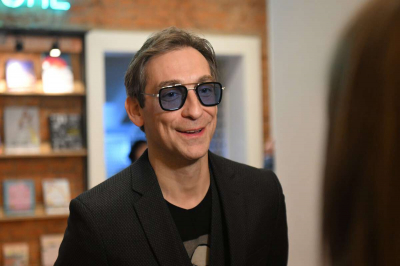Here’s a unique critical article in English about Back Seung Woo:
Back Seung Woo
Back Seung Woo: Pioneering Vision in Korean Contemporary Photography
Back Seung Woo is a prominent South Korean photographer known for his thought-provoking work in contemporary photography. His artistic vision explores themes of identity, reality, and the manipulation of perception, making him a significant figure in both Korean and global art circles. However, while his work has been highly praised for its innovation, it has also sparked debates regarding the complexities and challenges inherent in his artistic approach.
Artistic Approach and Style
Back Seung Woo's photography often examines the line between reality and illusion, utilizing visual manipulation to question the viewer’s perception. His series, such as "Blow Up" and "Real World," showcase his exploration of truth versus constructed reality, which draws inspiration from the tension between the documented and the fabricated. He frequently employs techniques that challenge the traditional role of photography as a medium of truth, offering viewers altered, sometimes unsettling, realities.
This approach has garnered significant attention for its originality, pushing the boundaries of how photography is perceived in contemporary art. However, it also raises a critical question: does this manipulation obscure the message? While Back Seung Woo's work masterfully exposes the malleability of reality, some critics argue that his heavy reliance on visual distortion sometimes distances the audience from the emotional core of the subject. His work, though visually striking, can at times appear more concerned with the conceptual experiment than with creating a relatable emotional experience.
Critical Reception
Back Seung Woo has received widespread acclaim, both in South Korea and internationally, for his challenging and complex imagery. His work has been exhibited in prestigious galleries, including the Museum of Modern Art (MoMA) in New York and various other international venues. Critics have praised his ability to deconstruct the familiar and turn it into something unfamiliar, a hallmark of postmodern art.
However, not all reception has been uniformly positive. Some art critics argue that while his concepts are intellectually stimulating, they can also be seen as overly cerebral, alienating audiences who seek a deeper emotional or narrative connection in art. The intellectual rigor of his work sometimes overshadows its accessibility, which may limit its appeal to a broader audience.
Themes of Identity and Nationalism
One of the most significant elements of Back Seung Woo's work is his commentary on identity and nationalism, especially within the context of South Korea’s rapidly modernizing society. His projects often reflect the tension between personal and collective identity, particularly in a country that has experienced dramatic political, social, and cultural shifts in a relatively short period.
In his series "Utopia," Back delves into themes of North and South Korea’s division, offering a visual narrative that both critiques and empathizes with the divided Korean peninsula. His exploration of this theme has been lauded as daring and socially relevant. Yet, some critics argue that his abstract representations of such a sensitive issue can sometimes feel detached or overly intellectualized, missing the opportunity to engage more directly with the human aspect of this division.
Technological Experimentation
Back Seung Woo is also known for his use of modern photographic technology to enhance the conceptual nature of his work. His manipulation of digital imagery is both a strength and a point of contention. On one hand, it showcases his ability to innovate and push the boundaries of the medium. On the other hand, some traditionalists argue that his reliance on technology at times overshadows the essence of photography as a means of capturing the rawness of reality.
The technological aspect of his work, though widely recognized for its innovative quality, raises questions about the longevity of his artistic style. As technology evolves, the once revolutionary techniques may risk becoming outdated, potentially reducing the long-term impact of his work.
Conclusion
Back Seung Woo stands as a bold figure in contemporary art, using photography as a tool to explore and challenge perceptions of reality, identity, and social issues. His critical engagement with themes such as nationalism and the artificiality of the photographic image has earned him both praise and criticism. While his work is often celebrated for its intellectual depth and visual manipulation, it is not without its challenges. Some critics argue that his conceptual complexity can alienate those seeking emotional or more accessible narratives.
Ultimately, Back Seung Woo’s work continues to push the boundaries of contemporary photography, forcing viewers to question their assumptions about truth and reality. However, whether his work will maintain its critical and cultural relevance as technology and artistic tastes evolve remains a subject of debate in the art world.
This article critically assesses Back Seung Woo’s contributions to photography, acknowledging both his innovation and the challenges of his approach.











